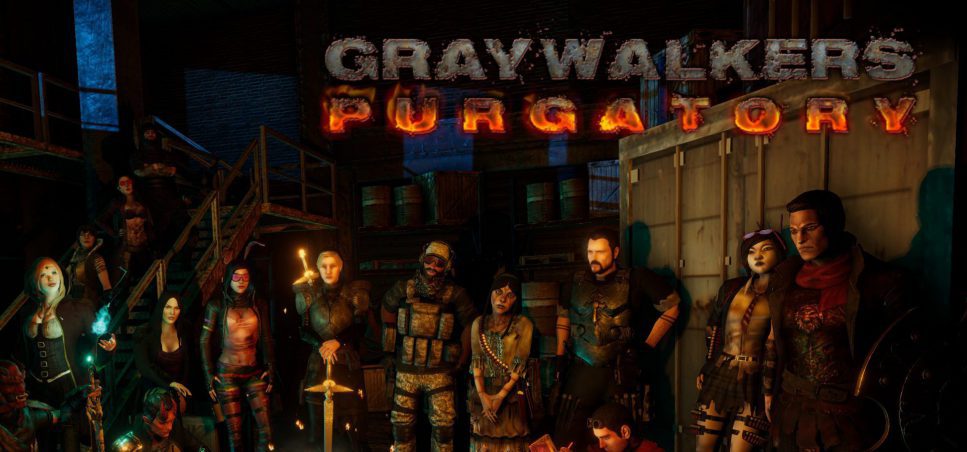Save humanity from a battle between divine powers, using a roster of crazy characters? Sounds great!
Type: Single-player
Genre: Adventure, RPG, Strategy
Developer: Dreamlords Digital Inc.
Publisher: Dreamlords Digital Inc.
Release Date: 15 Jan, 2020


Introduction
My colleague, Aurumlamina, previewed Graywalkers Purgatory shortly after its Early Access release some months ago and, while interested in the setting and the game’s potential, was not impressed with its content at that stage. “Content Update #1” — the first major update since the EA release — has recently been released, and I was invited to take a look at the game’s current state.
The game is set on a post-apocalyptic Earth, but rather than the much more common zombie-transforming virus or nuclear fallout, here the apocalypse was caused by angels and demons: heaven and hell went to war and Earth was the battleground.
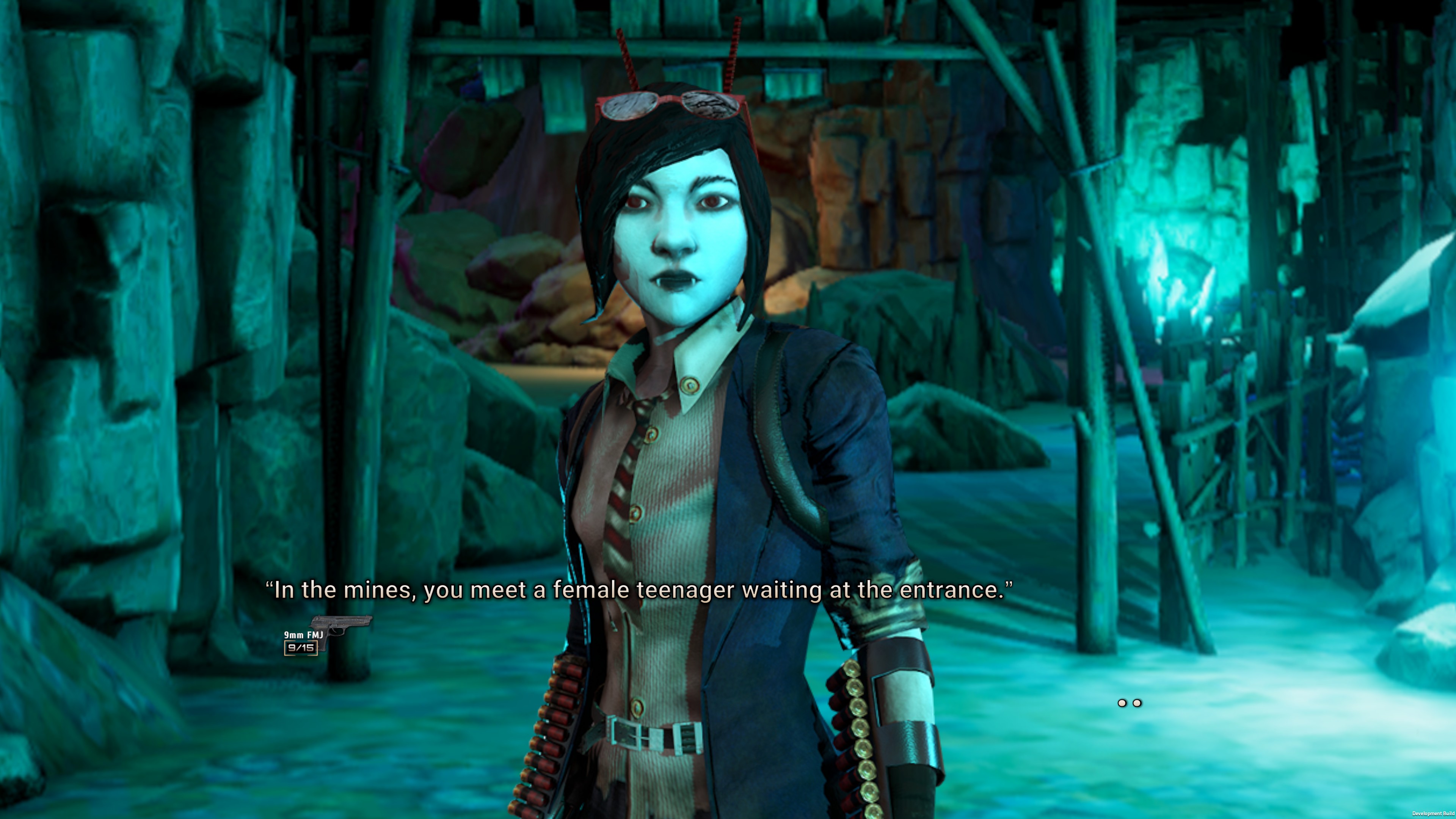
Gameplay
Though Content Update #1 has apparently introduced a large number of new weapons, items, abilities, and missions, there’s still no real campaign mode and the “Prelude Games” seem to have changed very little this year: there’s still only one available (Sister Aurice) and it still seems a bit broken. I’ll focus on the “Mission Games” for most of this review.
You’re introduced to the gameplay through a simple introductory mission that is supposed to function like a tutorial, but doesn’t really explain most of the basic gameplay or controls, and doesn’t even attempt to talk about character development or equipment. At least most of the basics are simple, so if you’ve played any turn-based strategy game in the last couple of decades you shouldn’t have too much trouble working them out.
The basic gameplay loop has been done many times before, but it’s a solid one. You have a sort of base of operations where you can manage each character’s skills, abilities, and equipment, and you also have a shared, persistent stash where you can store items you want to keep, but not equip immediately. From your base you can select a mission from the list of 19 available, select your squad, and launch the mission. Upon completion you return to your base again.
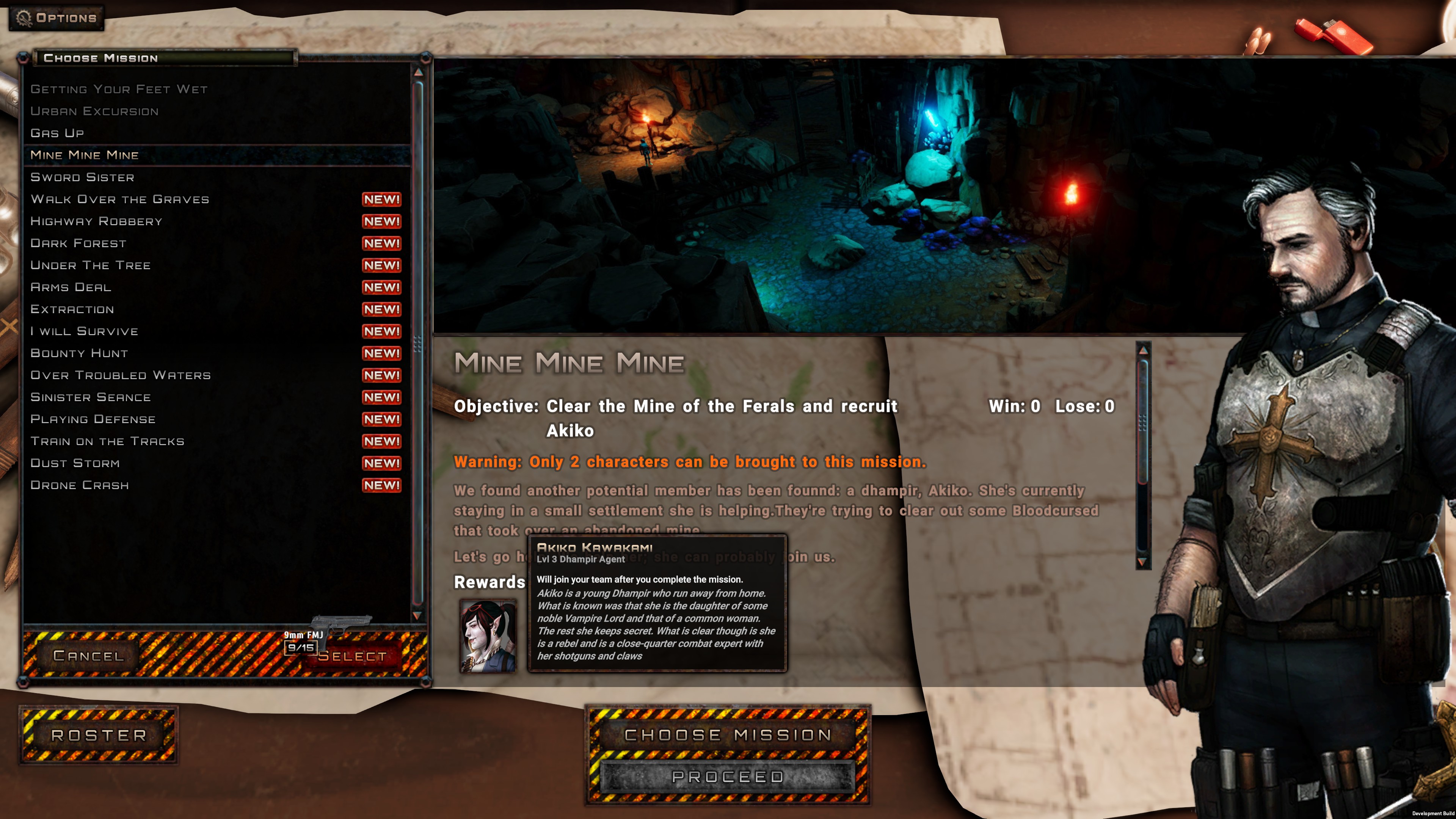
You begin the game with a single character available: Father Ruben, a warrior priest. Some missions add characters to your roster, allowing you to develop them and take them with you on subsequent missions. Each mission has a maximum number of characters that can be taken with you. While these limits don’t always make sense from the point of view of the game world, they’re a sort of upper limit to your power so that the mission enemies still pose a challenge.
Each mission comprises one or more small 3D areas, around which you can direct your characters in real time until they encounter an enemy. At this point the game switches to turn-based combat mode and you fall into the mostly familiar realm of action points, movement grids, and the like. Characters act in an order determined by their initiative (and perhaps a random factor; I’m not sure), so I usually find that enemies move before I do. I haven’t worked out how to initiate combat myself, allowing me to take advantage of longer range weapons, for example; perhaps the game engine doesn’t allow it.
Mission goals can vary, but often include killing all enemies in each area. Even the early missions tend to slather on the enemies, with the first training mission throwing a dozen or so corrupted snakes at you, and another mission a little later pelting you with more rats than you can count! I’ve encountered a single boss enemy that got extremely close to killing one of my characters in one hit, but it turned out to be a glass cannon and Father Ruben disposed of it in a single turn.
Options each turn are pretty standard for the genre, with both melee and ranged combat options available, as well as magic, depending on the individual character’s equipment, skills, and abilities. Overwatch is quite nice, allowing full control over your character when overwatch is triggered, but as with many games there’s no way to re-trigger if you decide you don’t want to act just yet — such as if you want to wait for a different enemy to move.
There are lootable objects on some maps (hold ALT, Diablo-style, to highlight them), but a lot of the loot is marked as “junk” and, indeed, doesn’t seem to have a use. I’m not sure if this change in future or if it’s all simply there for flavour.
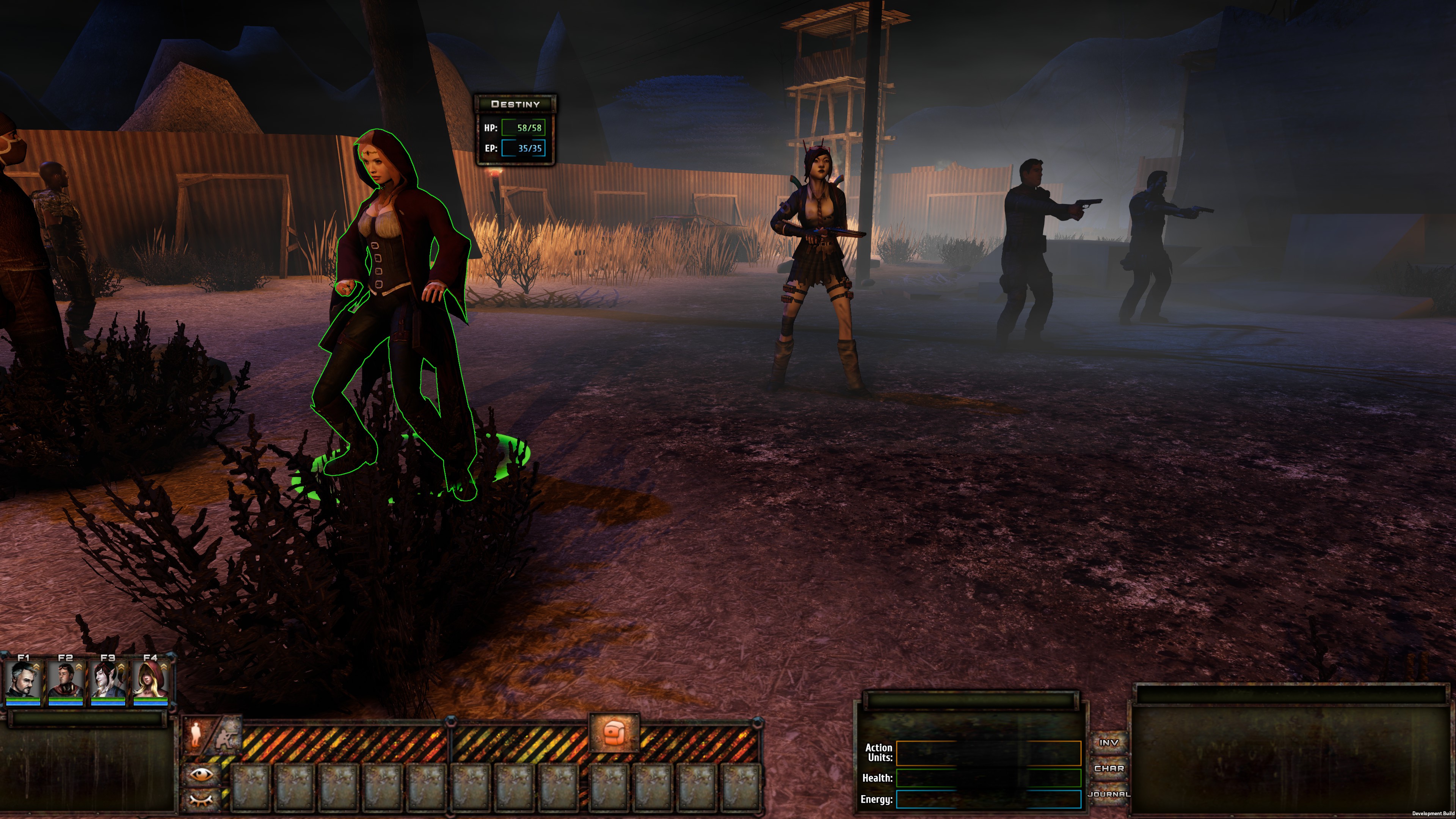
Characters and Game World
Where Graywalkers really attracts my interest is in the promise of a large, varied range of characters in an interesting game world. It hasn’t quite got there yet, but the future looks promising. The game’s lore is a bit weird, even reminding me of Buffy the Vampire Slayer in parts!
You play the “Prophesied One”, there to join the Graywalkers and help them save humanity from the war between heaven and hell. But the game seems a bit confused as to whether it wants to involve the player as a person, or some sort of unseen force, or what-have-you. At some points the characters talk to or about the player directly, but the whole game interface and basic gameplay don’t really continue this idea.
At any one time there are 36 Graywalkers, but they’re recruited from a pool of 18000 (yes, eighteen thousand!) people across the world whose destinies include the possibility of being a Graywalker (hence the Buffy vibe). Given the game’s supernatural setting and their goals, the Graywalkers include such people as priests, warrior nuns, action movie fans, half-vampires, witches, and so on. One assumes the final game will actually have at least 36 of them to choose from for various missions, but so far only a small subset is available. Just what you can do to save humanity from what one assumes must be a fairly all-encompassing war isn’t quite made clear in the current version of the game, either. I hope the campaign, when it eventually arrives, is sufficiently wide and deep to adequately cover the source material.
Anyway, as you play, your chosen characters earn experience and go up levels, as with most other RPGs. Each level you’re given skill points to spend, and sometimes you’re also given points to spend on your basic attributes and on two types of abilities: “general” and “path”. While at first glance there appears to be a large range of abilities, in practice it’s actually much more limited than it seems. Basic ability types are often repeated again and again for different attack or weapon types, for example, or different basic actions.
I also found myself with every character having a ton of path points available because I couldn’t find anything I wanted to spend them on, while general ability points are much rarer and also more useful. I think there’s a fair bit of effort still to go in terms of game balance here.
Presentation
Graywalker: Purgatory’s Graphics are a mixed bag.
The title screen is pretty nice, showing a large range of animated characters, many of whom aren’t in the game yet. But loading screens often look grainy and washed out, particularly when playing the game at 3840×2160 — I’m guessing they’re 1080p images. Cut scenes are made using pre-rendered background and character stills and tend to look equally poor at 4K.
The characters themselves are fairly variable, with some looking very “last-gen” (or even “last-last-gen”), and others looking more detailed and impressive. Animations are okay, though not great, when taken in isolation, but tend to be poorly timed and not attached to the world well; you’ll often find characters running on the spot, feet sliding across the ground, for example. Character models and poses change as you change active weapons, but don’t seem to change with changes in other equipment — so there’s no point in removing Destiny’s corset, okay!?
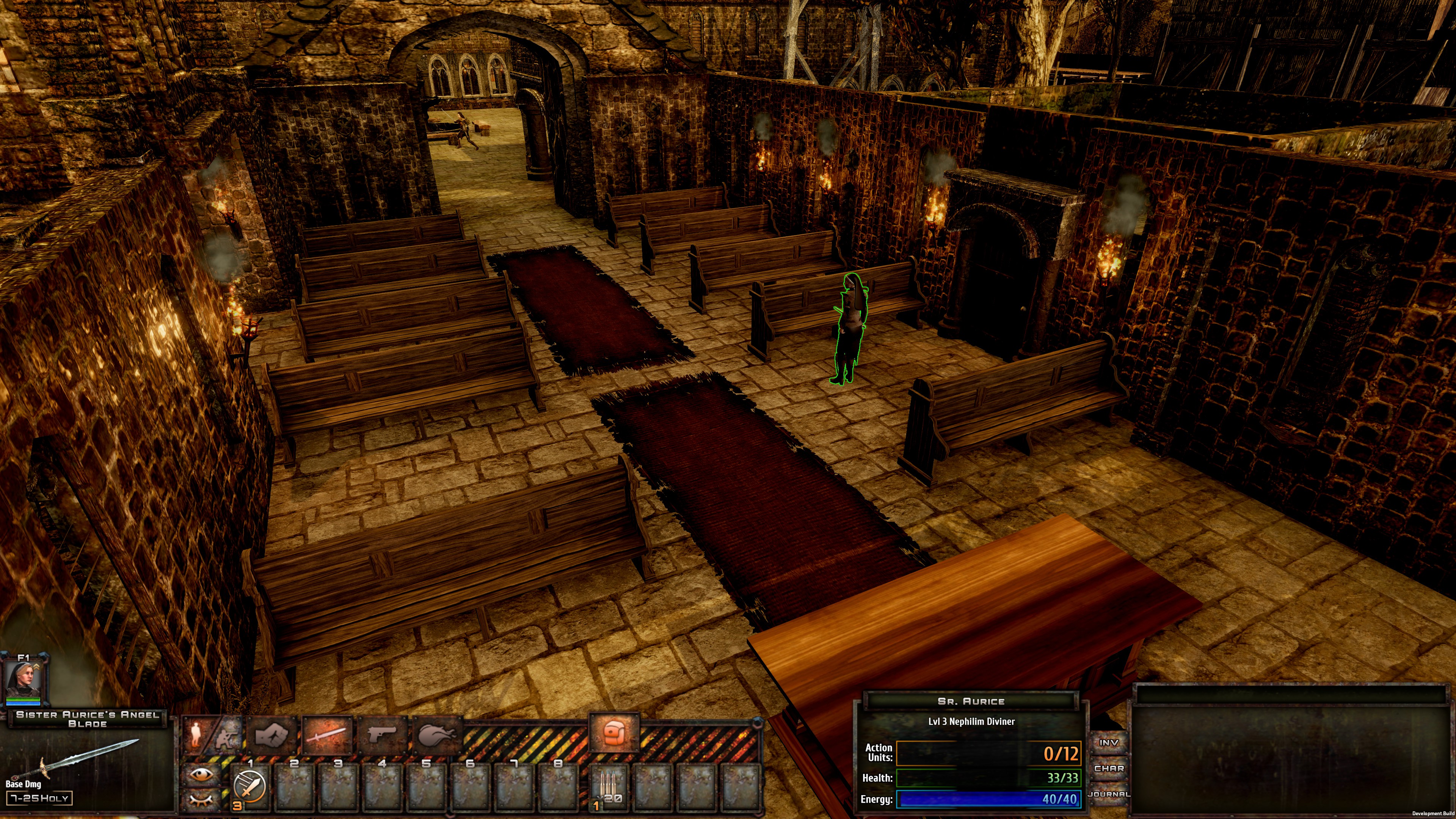
World graphics are pretty good and look reasonable at all levels of the large zoom range, though there are a few materials that make certain areas look rather too busy. Upstairs at the sisterhood (in Aurice’s prelude) is a good example. Each level is pretty small, however, and while the fading / fog at the edges of the mission areas looks okay, it is a little bit disappointing that nothing’s been done to try to make the area look like it’s actually part of a larger world. I expect to see some of the mission areas reused at some point, but so far I’ve completed half a dozen missions and each one has used a unique map (or two, in some cases). The variety is appreciated, though obviously many of the models and materials are the same in different areas.
The UI is exceptionally busy, with a fair bit of concentration and familiarity required in order to not suffer information overload. Tooltips help to some degree, but they’re not ubiquitous and sometimes don’t contain enough information. In particular it’s often hard to discern exact game effects or information for certain items; some mention specific effects and values or modifiers, while others are much more generic and it’s difficult to tell if they’re just there for flavour. Many game mechanics aren’t explained at all and it all feels a bit clunky.
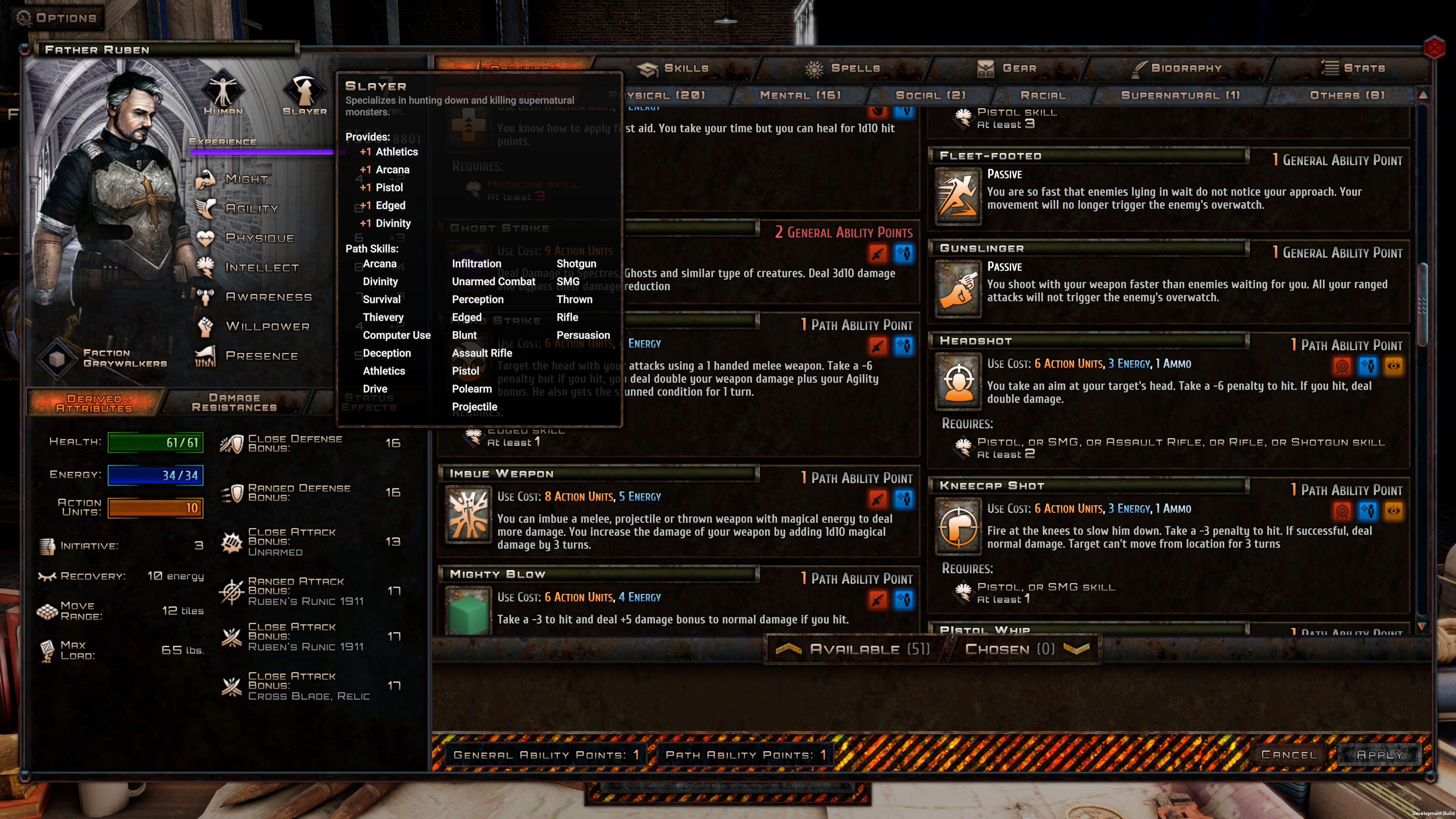
While most of the UI-based information is grammatically correct, the script — the mission cut scene text and dialogue — is mostly very poorly written. Some attention is definitely needed here!
The soundtrack is well produced, but not to my individual taste: it’s mostly in a sort of “metal” style. There are no voices and sound effects are acceptable, though seem to vary pretty wildly in volume. More sounds are definitely needed during combat to give it more impact.
Early Access
Graywalkers is very definitely still in Early Access! It’s not the most buggy EA game I’ve played, but it could certainly hold its own in a stand-up fight.
From stuck animations, to inventories not being accessible at the base, to items appearing and disappearing and being stuck on screen, null pointer and other console errors showing up, and saved games not being shown properly, if you spend more than an hour or so in the game I’d expect you to run a gauntlet of bugs and mishaps.
None of them have been truly game breaking, however, with most of the more invasive problems being fixed by quitting and reloading. But some work is definitely required on line of sight, with the game engine’s concept of line of sight being completely different to what the player can physically see on the screen, and some of the more insidious and annoying issues with action points needing to be fixed to reduce frustration. I would often move to a space on the grid only to find I’d used more action points than the game said it would to move there. Argh!
In terms of quality of life issues, I couldn’t find a way to move inventory items between characters without the use of a world container, making it imperative that I picked up items with the right character first time, and having no way to loot useful weapons and ammo from fallen human enemies just breaks immersion. When ammo is so rare, of course I’d be looting it off those bastards that were just shooting at me! Oh, and some way to fast-forward enemy actions so I don’t have to sit through them all would be great, too!
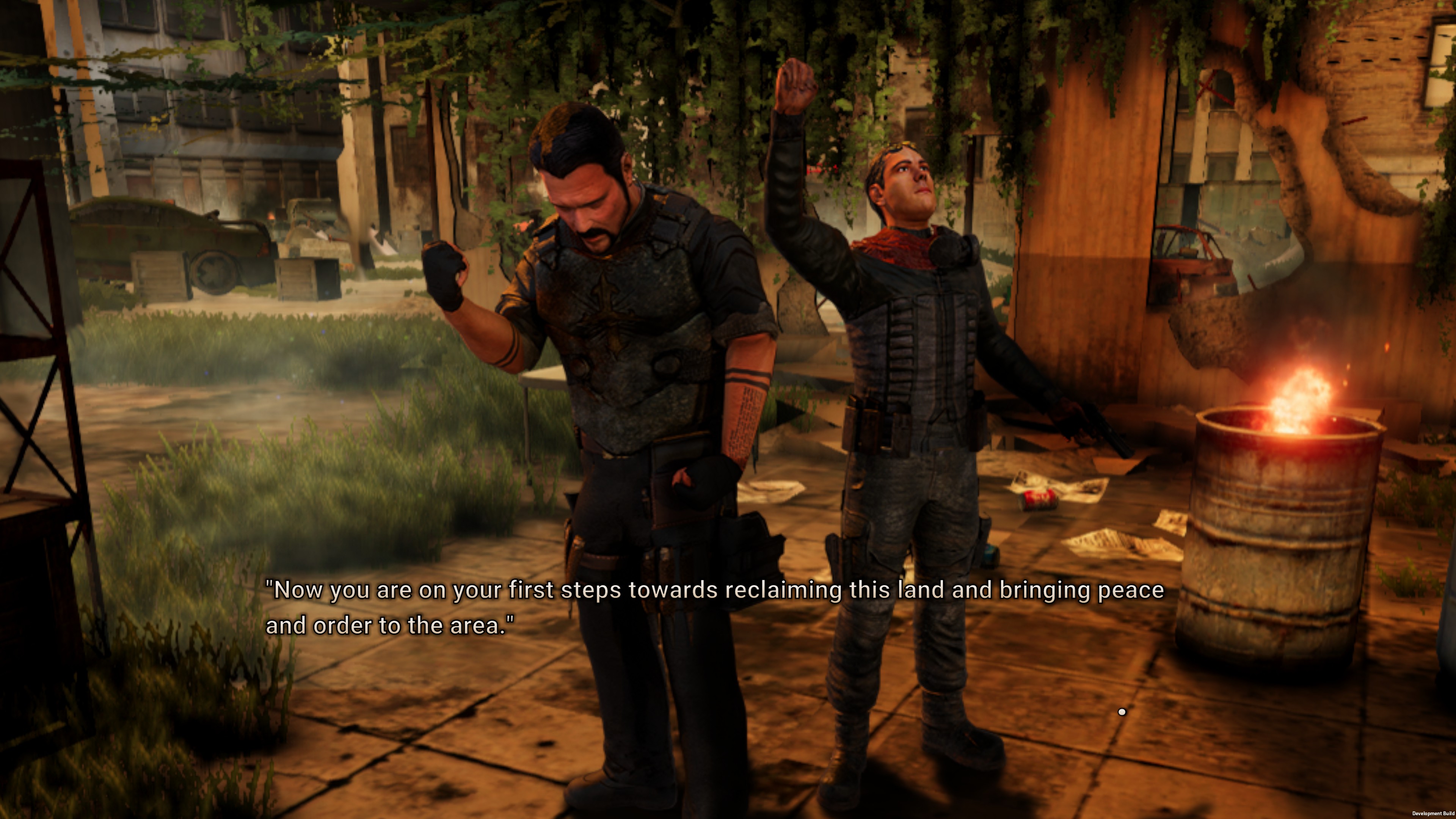
Verdict
Graywalkers: Purgatory is one of those games that could end up being fantastic, if the developers continue with it relentlessly and it fulfils its potential. The setting is interesting, the game engine is mostly sound, and the roster of characters is one of the more eclectic I’ve seen!
Or it could end up being left, abandoned and only partly finished. It’s hard to say. The developers have stuck with it this long, so that’s a plus, but other promising EA games have come and gone under similar circumstances, so, as I always do, I can only judge the game by what’s here now. And what’s here now is, unfortunately, pretty limited and a bit broken.
Having only recently completed the excellent Mutant: Year Zero, which is another RPG/TBS game set in a post-apocalyptic world, mixing real-time exploration with turn-based combat, I find myself naturally comparing the two. Sadly, Graywalkers doesn’t perform well in that comparison. The framework is here, though it’s a bit clunky, but it needs a lot more built on top of it.
Still, if you’re a fan of this type of game then it’s definitely worth keeping your eye on Graywalkers: Purgatory. At the moment, though, I wouldn’t recommend a purchase unless you simply want to support the developers.

